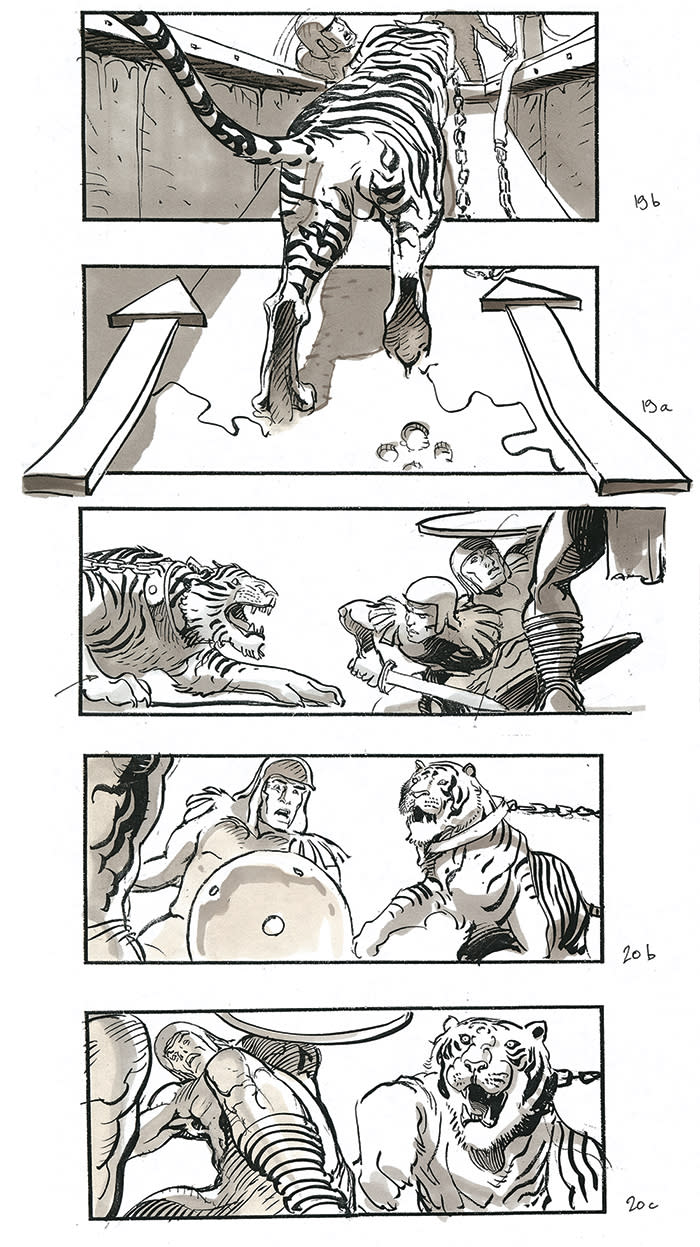Illustrator for ‘Avengers’ and ‘Gladiator’ Dives Into the Art of Storyboarding in New Book
- Oops!Something went wrong.Please try again later.
- Oops!Something went wrong.Please try again later.

“The Avengers,” “Alien Resurrection” and “The Fifth Element” are just a few of the high-profile films that illustrator Sylvain Despretz has worked on; he’s also collaborated with masters of filmmaking including Ridley Scott, Stanley Kubrick and David Fincher.
Now Despretz is sharing his art in the book “Los ángeles,” published in May by Caurette. It not only offers insight into his craft but provides film buffs with a glimpse into the importance of illustration in cinema.
More from Variety
'F9' Composer Brian Tyler Says Character, Not Action, Drives the Score
Accordions, Mandolins and Pizzicato Strings: 'Luca' Composer on Scoring the Italy-Set Pixar Film
Whether it’s motion, sound, imagery composition or movement, Despretz explains, “it’s how we tell stories without words.”
Of particular interest is Scott’s 2000 “Gladiator,” which won five Oscars, including best picture, costumes and special effects. Despretz describes the director as “very instinctive and very intuitive, visually. He will start with an image, which is his vision of the film.”
In “Gladiator,” Scott’s inspiration was the painting “Pollice Verso” by French artist Jean-Léon Gérôme. “The gladiator is in front of the royal box, and the king is giving him the thumbs down, meaning finish him, and that’s where it started, and we go from there.”
Once they were into the process, the duo moved on to the animal scenes.
Despretz began by designing the gladiator competitions, starting with one with a rhinoceros. But the idea was quickly discarded after Scott learned it was almost impossible to train a rhino. A similar sequence involving a zebra was tossed for the same reason. And in 1998, CG had not yet evolved to the standards of today, so inserting them digitally wasn’t really an option. “They were not convincing,” he says. “One of the keys to excellence is the ability to nix anything that does not meet the standard.”
The tiger sequence, which is laid out in the book, was the closest to the initial design. Real tigers were used. A tiger wrangler and a stunt person acted out the sequence before the film’s star, Russell Crowe, stepped in, showing the filmmakers what was possible and what wasn’t. “Very few shots were CG — set extensions, and almost none with tigers. It was designed shot by shot.”
The preproduction process for the film took nine months, which Despretz says is not unusual for a Scott film. Often, the artist says, the director will be storyboarding into production: “We design and scrap, and do it over again.” Since ideas continue to evolve, storyboards provide a way to instantly communicate new concepts.
Working with Scott, Despretz hasn’t often had the luxury of time to finish his storyboard illustrations. “Terry Needham, the first AD, [would] come to me and say, ‘We had a quick chat with Ridley; we need five shots showing this and this; we need them in the next seven minutes.’”
Ultimately, the degree of precision on a storyboard boils down to the person calling the shots, Despretz says. “The storyboards are as good as the director,” he says, adding that while some prefer not to opt for as much detail, Scott makes full use of drawings. “That’s going to give information to the set decorator, informing them of the amount of junk needed on a desk and where
it goes,” he says.
Despretz describes his work as another level of filmmaking — a meta-level of screenwriting. “The storyboard is important regardless of the budget of the film, regardless of whether or not you have visual effects,” he says. “It’s really about premeditating the graphic story of your film.”

Courtesy of DreamWorks Pictures
Sign up for Variety’s Newsletter. For the latest news, follow us on Facebook, Twitter, and Instagram.

